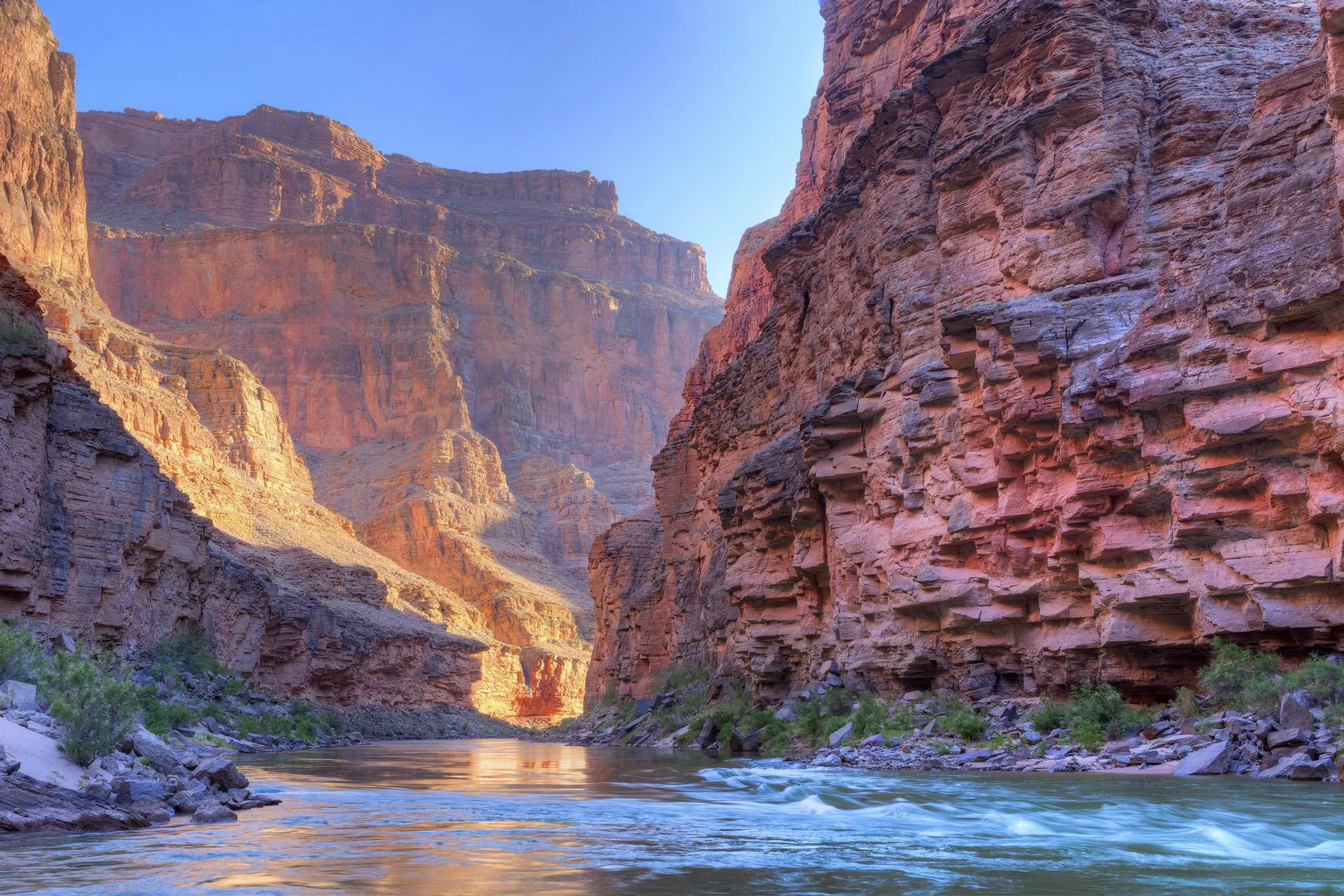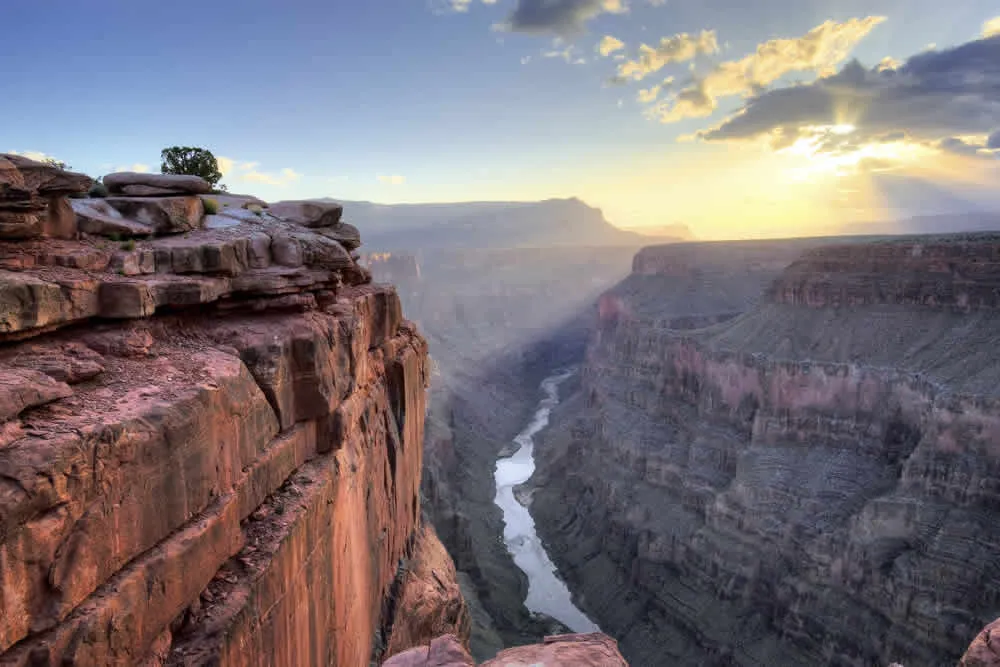Colorado, renowned for its majestic mountains and stunning natural landscapes, is home to numerous national parks boasting some of the most diverse ecosystems in the United States. More than just ideal destinations for adventure and nature enthusiasts, these national parks are also places that preserve invaluable historical, cultural, and biological treasures. Join “Du lịch khắp thế gian” to discover these “green gems” of Colorado.
Grand Canyon National Park: A Majestic Geological Wonder
Although the Grand Canyon is primarily located in Arizona, its geological and ecological influence extends, connecting with Colorado’s ecosystems. Established in 1919 and recognized by UNESCO as a World Heritage Site in 1979, the Grand Canyon stands as a testament to the effort to conserve biodiversity and natural landscapes.

Spanning 446 km in length, ranging from 0.4 to 24 km in width, and reaching depths of up to 1,600 meters, the Grand Canyon is a rich ecosystem with over 1,500 plant species, 355 bird species, 89 mammal species, 47 reptile species, 9 amphibian species, and 17 fish species. The diverse layers of rock and geological strata, dating back to ancient times, create a magnificent natural tapestry, attracting tourists and scientists worldwide.
The Grand Canyon, carved by the Colorado River over millions of years, is the national park’s most famous highlight. The vibrant red rock formations change color with the sunlight, creating a magical and magnificent scene.

Havasu Falls, located on a branch of Havasu Creek, is an unmissable destination. The 27-meter waterfall cascades into a large pool with a distinctive turquoise color due to high mineral content, creating a unique and captivating beauty.
Grand Canyon National Park also preserves over 2,600 prehistoric sites, including evidence of the Archaic culture. It is an ideal destination for those who love exploring nature, history, and culture.
Rocky Mountain National Park: A Wildlife Paradise
Rocky Mountain National Park is a treasure trove of biodiversity, stretching across towering peaks, lush meadows, and dense forests. It is home to many wildlife species such as elk, black bears, coyotes, and numerous rare bird species.
- Diverse Terrain: From snow-capped peaks year-round to verdant valleys, Rocky Mountain has it all.
- Rich Flora: Pine forests, spruce forests, alpine meadows, and various wildflowers adorn the landscape.
- Exploration Opportunities: Hiking, mountaineering, fishing, camping, and sightseeing are popular activities here.
Mesa Verde National Park: A Testament to Ancient Pueblo History
Mesa Verde is not only a national park with stunning scenery but also an invaluable cultural heritage site. It preserves cliff dwellings built by the Ancient Pueblo people from the 6th to the 13th centuries.
- Unique Architecture: Cliff dwellings built under overhanging rock ledges showcase the remarkable architectural and construction skills of the Ancient Pueblo people.
- Cultural Heritage: Mesa Verde is one of the most important archaeological sites in the United States, helping us understand more about the life and culture of the Ancient Pueblo people.
- Historical Experience: Visitors can explore the cliff dwellings, learn about the history and culture of the Ancient Pueblo people, and admire the beautiful natural scenery.
Black Canyon Of The Gunnison National Park: The Majestic Black Canyon
Black Canyon of the Gunnison is a deep and narrow canyon carved by the Gunnison River over millions of years. The towering cliffs and the canyon’s mysterious black color create a majestic and impressive landscape.
- Rugged Terrain: The canyon is over 800 meters deep, with nearly vertical cliffs.
- Unique Scenery: The black color of the rocks and the contrast with the blue sky create a strange and captivating beauty.
- Adventure Activities: Rock climbing, hiking, and sightseeing are popular activities here.
Best Season to Explore Colorado National Parks?
The best time to visit the national parks in Colorado depends on your preferences and the activities you want to experience.
- Summer (June – August): Warm weather, ideal for hiking, mountaineering, and camping. However, this is also the peak tourist season, so you should book in advance.
- Autumn (September – October): Cool, pleasant weather, with leaves turning yellow and red, creating a stunning landscape. This is an ideal time for those who want to enjoy the scenery and take photos.
- Winter (November – April): Heavy snowfall, suitable for skiing and snowboarding. Some areas may be closed due to snow.
- Spring (May): Weather can be unpredictable, with snow still present on high peaks. However, this is an ideal time to see wildflowers in bloom.
Conclusion
The national parks in Colorado are not only attractive tourist destinations but also important nature reserves, contributing to the protection of biodiversity and natural landscapes for future generations. Come and discover these “green gems” of Colorado to experience the wonders that nature bestows. Are you ready for an adventure to explore the ecologically diverse national parks in Colorado?